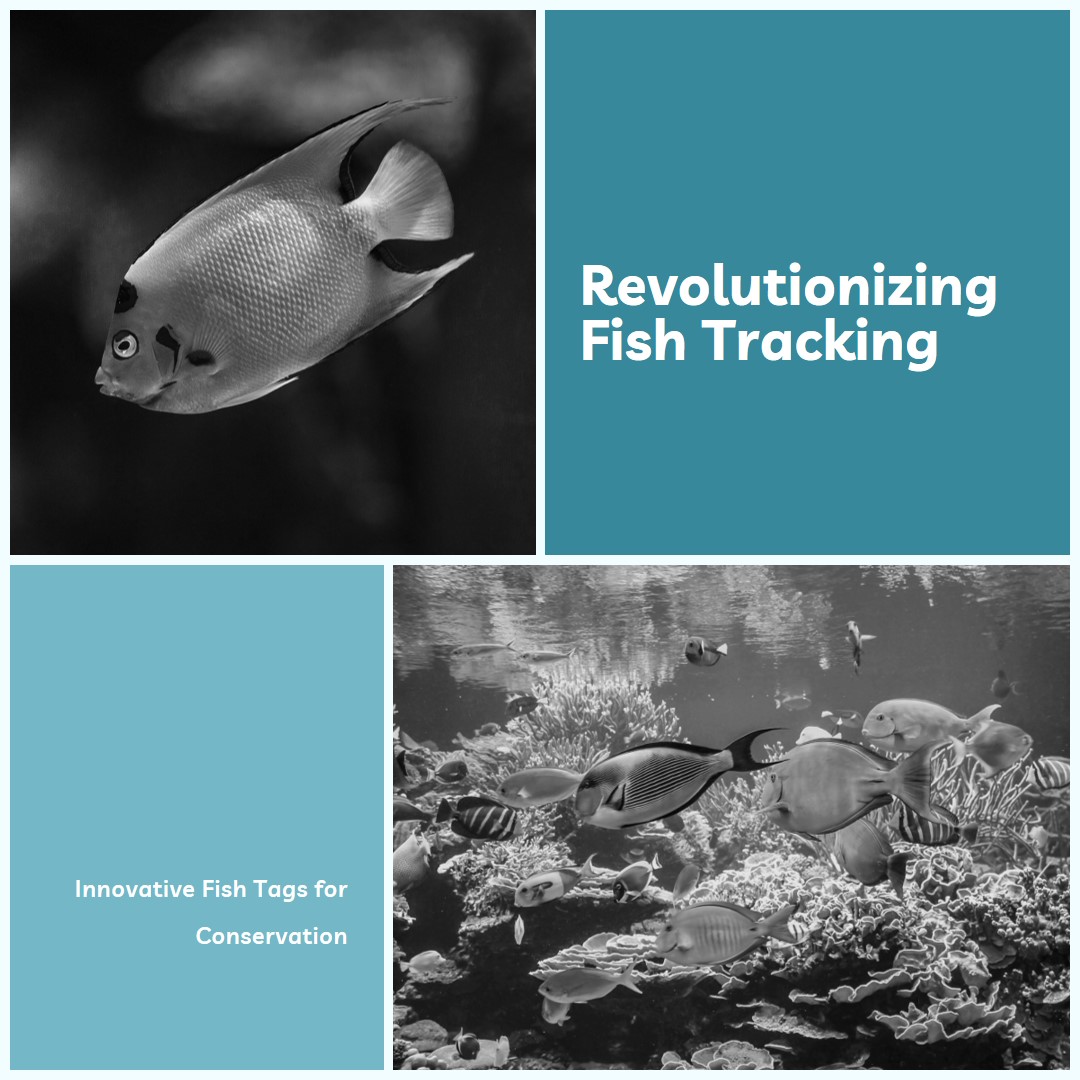The tracking and conservation of marine life have witnessed remarkable advancements in recent years, thanks to innovative fish tagging technologies. These technologies are revolutionizing the way researchers and conservationists monitor fish populations, track their movements, and gather vital data necessary for the protection of marine ecosystems. This article delves into the significance of fish tags, their various applications, and how companies are playing a crucial role in supporting fish husbandry and marine life research.
Understanding Fish Tags
Fish tags are small devices attached to fish for the purpose of identification and data collection. These tags come in various forms, including acoustic tags, satellite tags, and passive integrated transponder (PIT) tags. Each type of tag serves a specific purpose and provides unique benefits for marine research and conservation efforts.
Types of Fish Tags
- Acoustic Tags: These tags emit sound signals that are picked up by underwater receivers. They are ideal for tracking fish movements in specific areas and provide real-time data on fish behavior and migration patterns.
- Satellite Tags: These tags transmit data to satellites, allowing researchers to monitor fish movements over large distances. They are particularly useful for studying migratory species and understanding their long-range travel routes.
- PIT Tags: Passive Integrated Transponder (PIT) tags are small, electronic tags that are implanted under the skin of fish. They provide a unique identification code for each tagged fish and are commonly used in hatcheries and research facilities for long-term monitoring.
Applications of Fish Tags
The applications of fish-tags are diverse and far-reaching, playing a pivotal role in fish husbandry, marine life research, and conservation efforts.
Fish Husbandry
In fish husbandry, fish tagging are used to monitor the health and growth of fish populations. By tagging individual fish, researchers can track their growth rates, feed efficiency, and overall health. This data is invaluable for optimizing feeding regimes, improving breeding programs, and ensuring the sustainability of fish stocks.
Marine Life Research
Marine life research greatly benefits from fish tagging technologies. Researchers use fish tagging to study various aspects of fish behavior, such as migration patterns, habitat preferences, and spawning activities. This information helps in understanding the ecological needs of different fish species and designing effective conservation strategies.
Conservation Efforts
Conservationists use fish-tags to monitor endangered species and assess the effectiveness of marine protected areas (MPAs). By tracking the movements of tagged fish, researchers can identify critical habitats and migration corridors, which are essential for the survival of endangered species. This data is crucial for making informed decisions about marine conservation policies and protecting vulnerable ecosystems.
Benefits of Fish Tagging
The use of fish tagging offers numerous benefits for fish husbandry, marine life research, and conservation efforts.
Enhanced Data Collection
Fish tagging provide accurate and reliable data on fish movements, behavior, and population dynamics. This data is essential for understanding the complex interactions within marine ecosystems and making informed management decisions.
Improved Fish Stock Management
By tracking the health and growth of tagged fish, researchers can develop effective strategies for managing fish stocks. This ensures the sustainability of fish populations and supports the long-term viability of fisheries.
Conservation of Endangered Species
Fish-tags are instrumental in the conservation of endangered species. By monitoring the movements of tagged fish, researchers can identify critical habitats and migration routes, which are vital for the survival of these species. This information is crucial for designing effective conservation strategies and protecting vulnerable ecosystems.
Support for Marine Protected Areas (MPAs)
Fish-tags provide valuable data on the effectiveness of MPAs. By tracking the movements of tagged fish within and outside protected areas, researchers can assess the impact of MPAs on fish populations and make informed decisions about marine conservation policies.
The Role of Voda IQ
Voda IQ is at the forefront of providing innovative fish tagging solutions for fish husbandry and marine life research. Their state-of-the-art fish tags and tracking technologies enable researchers to gather accurate data on fish movements, behavior, and population dynamics. Voda IQ’s commitment to advancing fish tagging technologies is instrumental in supporting conservation efforts and ensuring the sustainability of marine ecosystems.
Future Innovations in Fish Tagging
The future of fish tagging holds exciting possibilities for further advancements in tracking technologies and data collection methods. Researchers and technology developers are continuously working on improving the accuracy, reliability, and miniaturization of fish tagging. Here are some of the future innovations that hold promise for revolutionizing fish tagging and conservation efforts.
Miniaturization of Tags
Advancements in technology are enabling the development of smaller and more lightweight fish tagging. These miniaturized tags can be used to track smaller fish species and provide more detailed data on their movements and behavior.
Integration with Environmental Sensors
Future fish tagging may be equipped with environmental sensors that can collect data on water temperature, salinity, and other environmental parameters. This integrated data can provide a more comprehensive understanding of the factors influencing fish behavior and habitat preferences.
Enhanced Data Transmission
Improvements in data transmission technologies will enable fish tagging to transmit data more efficiently and over longer distances. This will enhance the ability of researchers to track fish movements and gather real-time data on their behavior.
Artificial Intelligence and Data Analytics
The integration of artificial intelligence (AI) and data analytics with fish tagging technologies holds great potential for revolutionizing data collection and analysis. AI algorithms can analyze large volumes of data collected from fish tags and provide valuable insights into fish behavior, population dynamics, and ecosystem interactions.
FAQs
- What are the different types of fish tags? Fish tags come in various forms, including acoustic tags, satellite tags, and passive integrated transponder (PIT) tags. Each type of tag serves a specific purpose and provides unique benefits for marine research and conservation efforts.
- How do fish tagging benefit fish husbandry? Fish tagging are used in fish husbandry to monitor the health and growth of fish populations, optimize feeding regimes, improve breeding programs, and ensure the sustainability of fish stocks.
- How do fish tagging support marine life research? Fish tagging are used in marine life research to study various aspects of fish behavior, such as migration patterns, habitat preferences, and spawning activities. This information is crucial for understanding the ecological needs of different fish species and designing effective conservation strategies.
- What are the future innovations in fish tagging? Future innovations in fish tagging include the miniaturization of tags, integration with environmental sensors, enhanced data transmission, and the use of artificial intelligence and data analytics for data collection and analysis.
Conclusion
Innovative fish tags are revolutionizing the tracking and conservation of marine life. These technologies provide valuable data on fish movements, behavior, and population dynamics, which are essential for fish husbandry, marine life research, and conservation efforts. Companies are at the forefront of advancing fish tagging technologies, supporting researchers and conservationists in their efforts to protect marine ecosystems. As technology continues to evolve, the future of fish tagging holds exciting possibilities for further advancements and improved conservation outcomes. How will these innovations shape the future of marine conservation?
Also know about Understanding Pit Tags: Benefits, Applications & Future Innovations in Tracking


